Managing low vision in an aging population
As Baby Boomers enter the at-risk age group for vision loss, optometrists must be ready to act.
All optometrists take the “Optometric Oath,” which is as follows1:
With full deliberation, I freely and solemnly pledge that:
I AFFIRM that the health of my patient will be my first consideration.
I WILL practice the art and science of optometry faithfully and conscientiously, and to the fullest scope of my competence.
I WILL uphold and honorably promote by example and action the highest standards, ethics, and ideals of my chosen profession and the honor of the degree, Doctor of Optometry, which has been granted to me.
I WILL provide professional care for the diverse populations who seek my services, with concern, with compassion, and with due regard for their human rights and dignity.
I WILL work to expand access to quality care and improve health equity for all communities.
I WILL place the treatment of those who seek my care above personal gain and strive to see that none shall lack for proper care.
I WILL hold as privileged and inviolable all information entrusted to me in confidence by my patients.
I WILL advise my patients fully and honestly of all which may serve to restore, maintain, or enhance their vision and general health.
I WILL strive continuously to broaden my knowledge and skills so that my patients may benefit from all new and efficacious means to enhance the care of human vision.
I WILL share information cordially and unselfishly with my fellow doctors of optometry and other professionals for the benefit of patients and the advancement of human knowledge and welfare.
I WILL do my utmost to serve my community, my country, and humankind as a citizen as well as a doctor of optometry.
I HEREBY commit myself to be steadfast in the performance of this my solemn oath and obligation.
This oath specifically charges each optometrist to “advise my patients fully and honestly of all which may serve to restore, maintain, or enhance their vision and general health and to strive continuously to broaden my knowledge and skills so that my patients may benefit from all new and efficacious means to enhance the care of human vision.”1
Figure 1
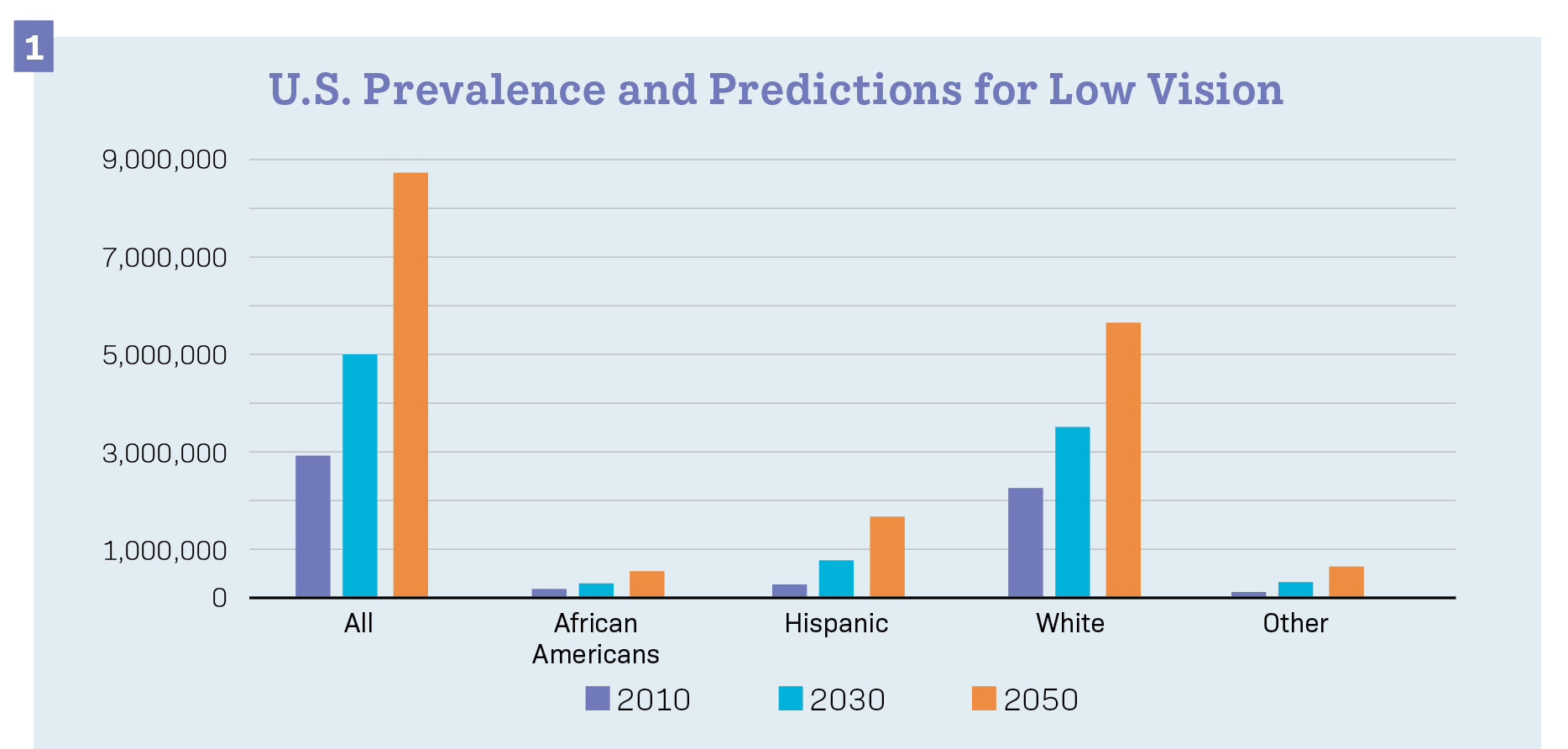
According to the National Eye Institute, the number of patients with low vision is expected to increase, and the prevalence of low vision is expected to almost triple by the year 2050 (Figure 1).2 With this increase in patients with low vision, all optometrists will encounter and care for those with vision loss.
Aging and the common causes of vision loss
Figure 2
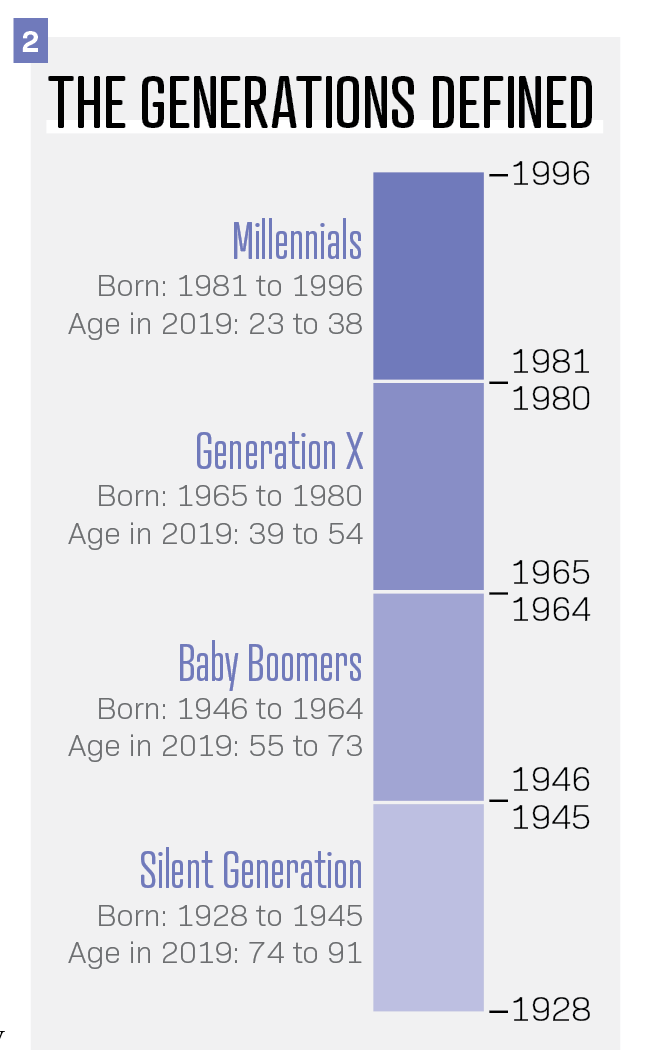
Vision loss can occur due to a myriad of causes, including congenital anomalies, trauma, and disease. With the US population aging and living longer, we can expect to see more age-related eye disease leading to vision loss. In addition, we can expect to see more systemic disease with ocular manifestations causing loss of vision. Baby Boomers, people aged 66 to 84 years, will number 61 million in 2030.3 The Baby Boomer generation is defined as those individuals born between 1946 and 1964 (Figure 2).4
Figure 3
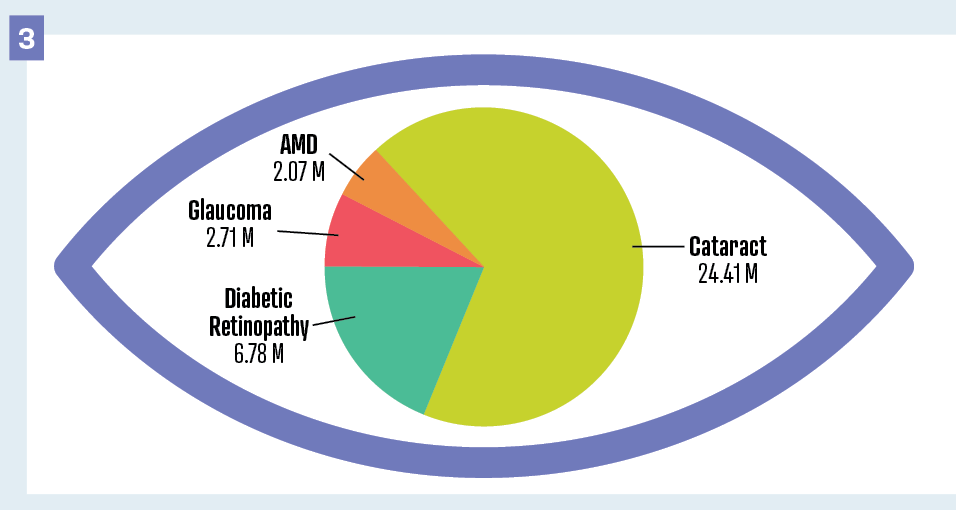
The most common causes of vision loss over the age of 40 years are diabetic retinopathy, glaucoma, cataracts, and age-related macular degeneration (AMD), according to the National Eye Institute (Figure 3). The incidence of these disorders is expected to increase with the aging population.
Diabetic retinopathy
Diabetic retinopathy is the leading causes of blindness in working-age adults.5 Diabetic retinopathy is a contributor to the projected per capita increase in vision impairment (VI) in the United States.6 Uncontrolled blood sugar levels, high hemoglobin A1C levels, and smoking increase the risk of diabetic retinopathy in patients.7 Diabetic retinopathy leads to vision loss in several ways, including retinal neovascularization, retinal detachments, and macular edema or even neovascular glaucoma.
Diabetic retinopathy is unique in that although the disease itself can cause vision loss, some of the treatments can as well. For example, neovascularization can cause tractional retinal detachments, which can lead to peripheral vision loss, or central vision loss, depending on severity.
To treat the neovascularization, a patient may receive panretinal photocoagulation, which in turn may cause peripheral vision loss. Because diabetic retinopathy can cause central and peripheral vision loss, a multitude of low vision interventions and devices can be helpful. These types of interventions and devices can significantly improve the quality of life of visually impaired patients.
Glaucoma
Glaucoma is a group of eye diseases that damage the optic nerve. Because many types of glaucoma do not have symptoms, vision loss can happen slowly.5 Due to the often slowly progressive nature of glaucoma, significant vision loss can occur before a patient seeks the care of an optometrist or other eye care professional. Risk factors include having a family history of glaucoma, being over age 60, and being African American, Asian, or Hispanic/Latino.7
Glaucoma is not curable, but treatments to slow its progression are key. These treatments include both topical and oral medicines, laser treatments, and surgical interventions. Vision loss from glaucoma typically causes peripheral vision loss that can eventually lead to tunnel vision, causing significant difficulties with mobility, independence, and activities of daily living (ADLs).
Cataracts
Cataracts are a normal part of the aging of the eye’s lens. Everyone’s lenses get cloudy as they get older; however, those with diabetes and other systemic conditions are at increased risk of developing cataracts. Although treatable, cataracts remain one of the leading causes of vision loss globally, affecting approximately 95 million people worldwide.7-9
There are many different reasons why cataracts can occur, but age-related cataract is the most common type in the adult population, with an onset in those between the ages of 45 and 50 years. Findings from some studies have even shown that the prevalence of cataracts increases with age, from 3% to 9% in individuals aged 55 to 64 years to as much as 92% to 96% in those aged 80 and older. The burden of cataract is predicted to increase dramatically over the next decades, especially in Western countries, because of longer life expectancies and the progressive aging of the population.10
Cataracts cause overall decreased visual acuity with accompanying haze, decreased brightness in colors, and glare, which is mostly noticed during rainy or nighttime driving conditions. Those who have vision loss from cataracts and are not candidates for cataract surgery may benefit from a low vision evaluation. Devices that may be helpful in these cases include hand-held magnifiers, electronic magnifiers, and tints or fit-overs for glare concerns.
AMD
Figure 4
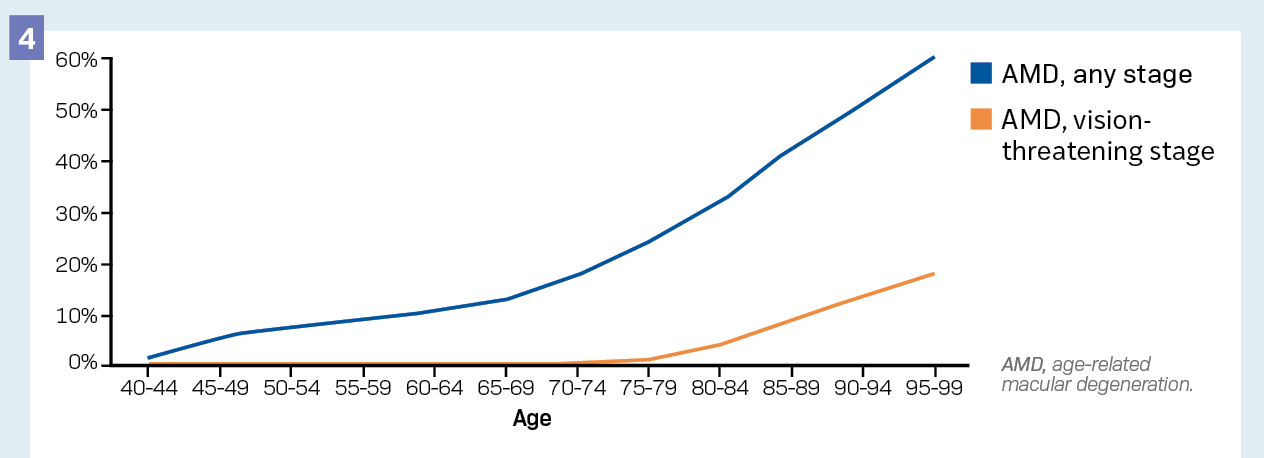
AMD is a vision-threatening condition that can blur central vision or cause complete loss of central vision in the form of a scotoma. In 2019, an estimated 19.8 million Americans over 40 years old were living with AMD, and the prevalence of AMD increased with age11 (Figure 4). The loss of central vision can cause difficulties with multiple ADLs including driving, meal preparation, and reading.
Those with central vision loss from AMD and other causes can benefit immensely from a low vision evaluation and various low vision devices. Devices that help with central vision loss include magnifiers, which can magnify images beyond the patient’s scotoma. Electronic magnifiers can also be helpful, including wearable, head-borne devices for better distance viewing. Additionally, these patients may benefit from eccentric viewing training.
Conclusion
Figure 5
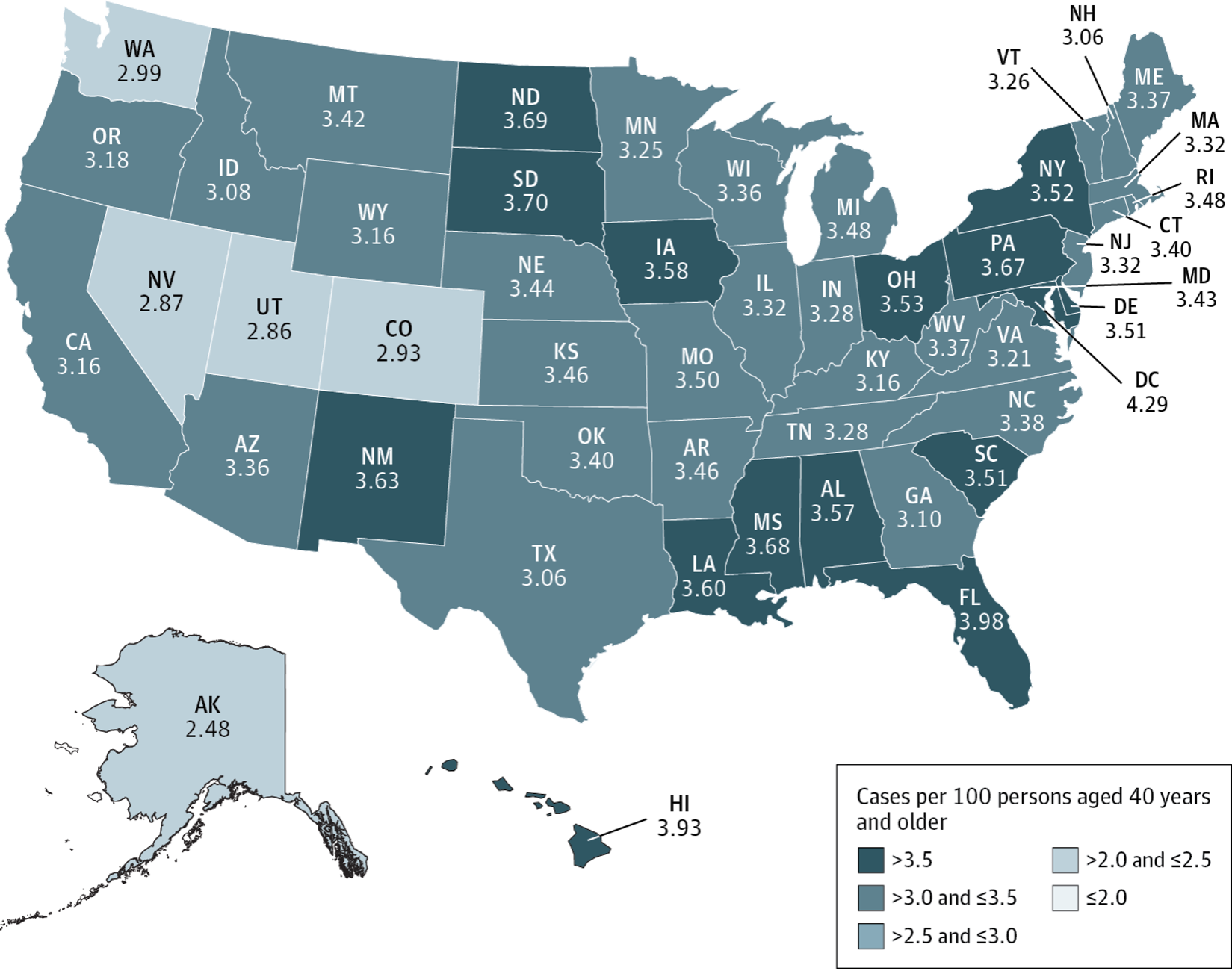
By 2050, the numbers of low vision conditions are projected to double to approximately 2.01 million people with blindness, 6.95 million people with VI, and 16.4 million with VI due to uncorrected refractive error. The highest numbers of these conditions in 2015 were among non-Hispanic White individuals (2.28 million), women (1.84 million), and older adults (1.61 million), and these groups will remain the most affected through 2050. From 2015 to 2050, the states projected to have the highest per capita prevalence of VI are Florida (2.56% in 2015 to 3.98% in 2050) and Hawaii (2.35% in 2015 to 3.93% in 2050). Those projected to have the highest per capita prevalence of blindness are Mississippi (0.83% in 2015 to 1.25% in 2050) and Louisiana (0.79% in 2015 to 1.20% in 2050).6 (Figure 5)
VI poses an enormous global financial burden with an estimated annual global productivity loss of about $411 billion purchasing power parity.8 The projected increase in the number of individuals with vision loss will influence all states and countries around the world.
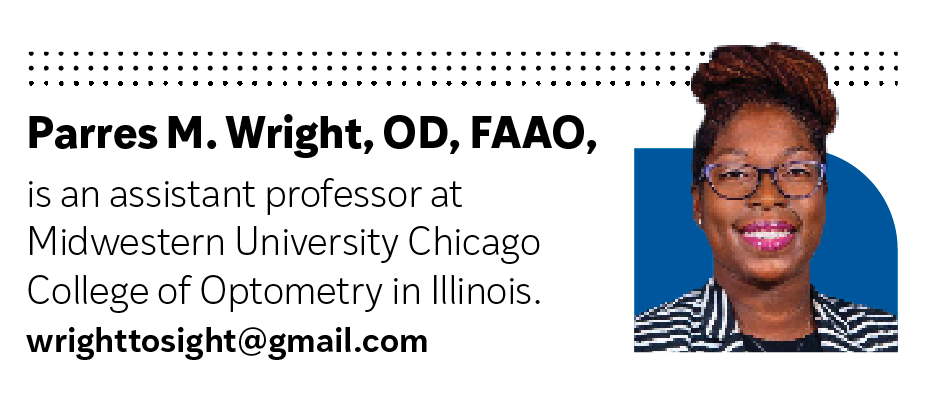
Optometrists must be prepared to ensure that visually impaired patients receive the interventional care needed through early diagnosis, treatment, and vision rehabilitation. The “2030 problem” involves the challenge of assuring that sufficient resources and an effective service system are available.3 With preparation and diligence, optometrists can significantly improve the quality of life of patients.
References
1. The American Optometric Association (The American Optometric Association, n.d.) (Baby Boomers - Facts & Summary, n.d.) Accessed November 5, 2022.
2. Low vision tables. National Eye Institute. Updated February 7, 2020. Accessed February 27, 2016. https://www.nei.nih.gov/learn-about-eye-health/eye-health-data-and-statistics/low-vision-data-and-statistics/low-vision-tables
3. Knickman JR, Snell EK. The 2030 problem: caring for aging baby boomers. Health Serv Res. 2002;37(4):849-884. doi:10.1034/j.1600-0560.2002.56.x
4 . Baby boomers. History Channel. Accessed November 11, 2022. http://www.history.com/topics/baby-boomers
5. Diabetes and vision loss. Centers for Disease Control and Prevention. Updated May 7, 2021. Accessed November 11, 2022. https://www.cdc.gov/diabetes/managing/diabetes-vision-loss.html
6. Varma R, Vajaranant TS, Burkemper B, et al. Visual impairment and blindness in adults in the United States: demographic and geographic variations from 2015 to 2050. JAMA Ophthalmol. 2016;134(7):802-809. doi:10.1001/jamaophthalmol.2016.1284
7. National diabetes statistics report. Centers for Disease Control and Prevention. Updated June 29, 2022. Accessed 11 November 2022. https://www.cdc.gov/diabetes/data/statistics-report/index.html
8. Blindness and vision impairment. World Health Organization. October 13, 2022. Accessed 11 November 2022. https://www.who.int/news-room/fact-sheets/detail/blindness-and-visual-impairment
9. Gliagias V. The prevalence of cataract blindness and the life-saving impact of cataract surgery. Eyes On EyeCare. June 7, 2022. Accessed November 11, 2022. https://eyesoneyecare.com/resources/the-prevalence-of-cataract-blindness-and-the-life-saving-impact-of-cataract-surgery/?utm_medium=eoe:infinite-scroll
10. Liu YC, Wilkins M, Kim T, Malyugin B, Mehta JS. Cataracts. Lancet. 2017;390(10094):600-612. doi:10.1016/S0140-6736(17)30544-5
11. Prevalence of age-related macular degeneration (AMD). Centers for Disease Control and Prevention. Updated October 31, 2022. Accessed November 11, 2022. https://www.cdc.gov/visionhealth/vehss/estimates/amd-prevalence.html
